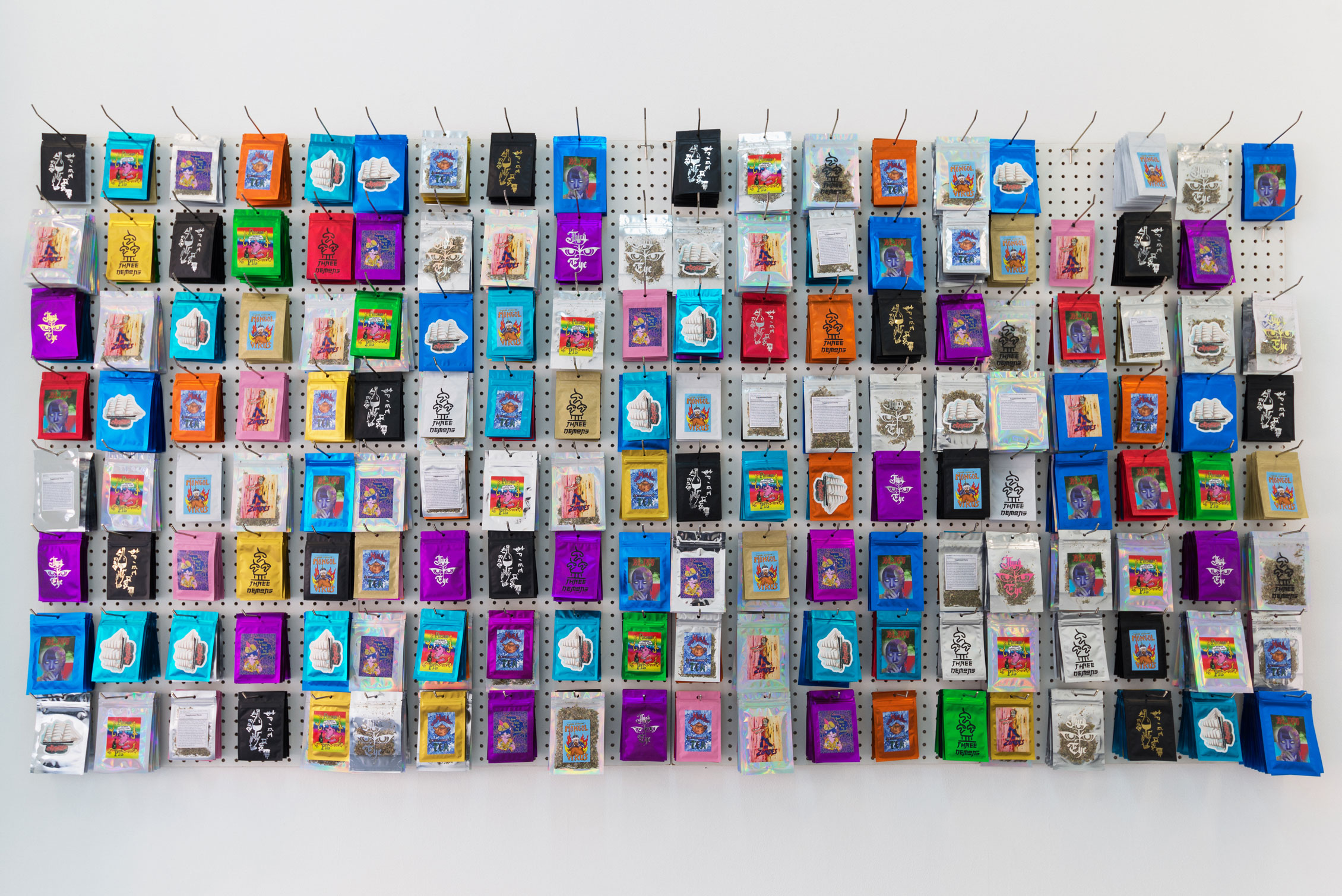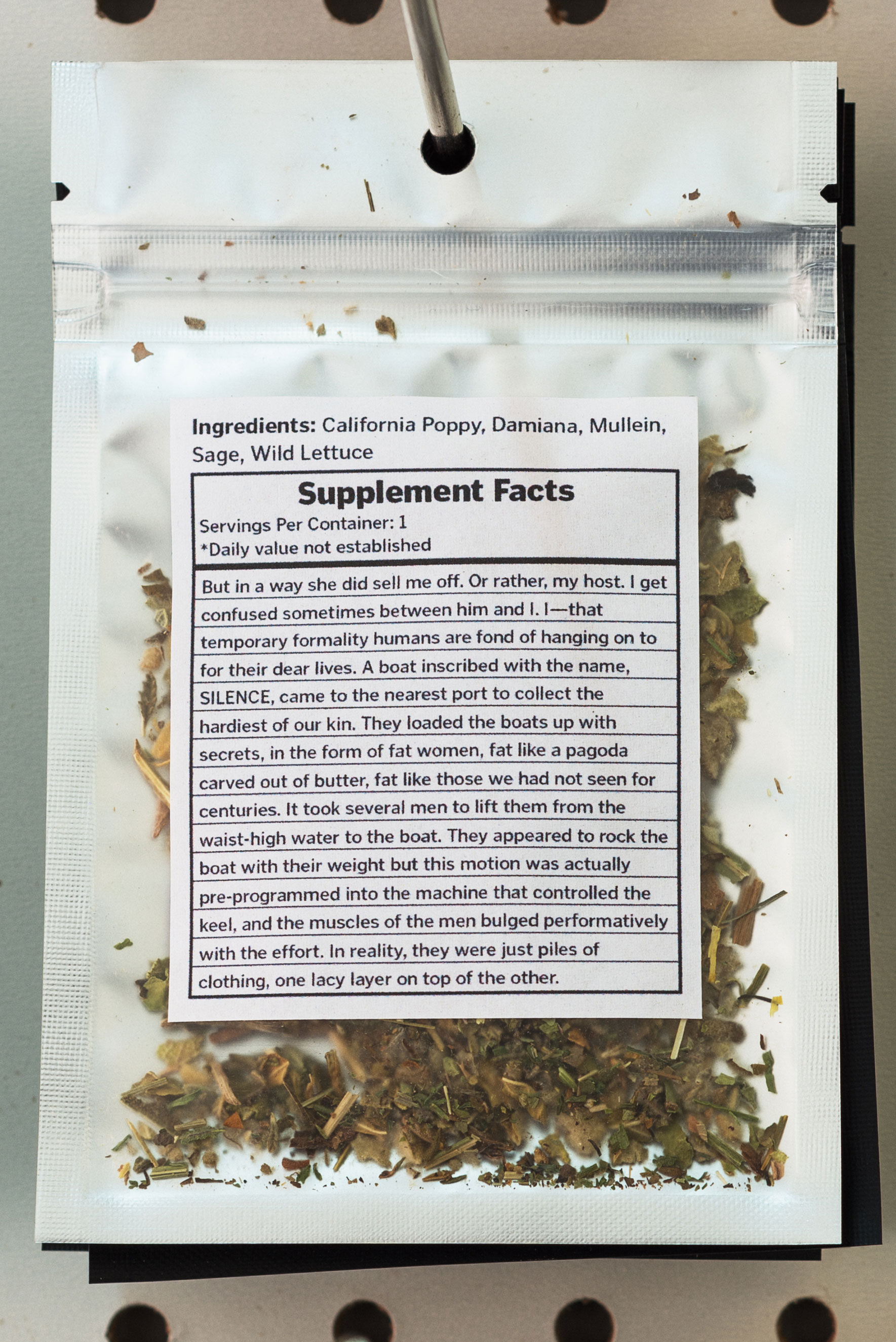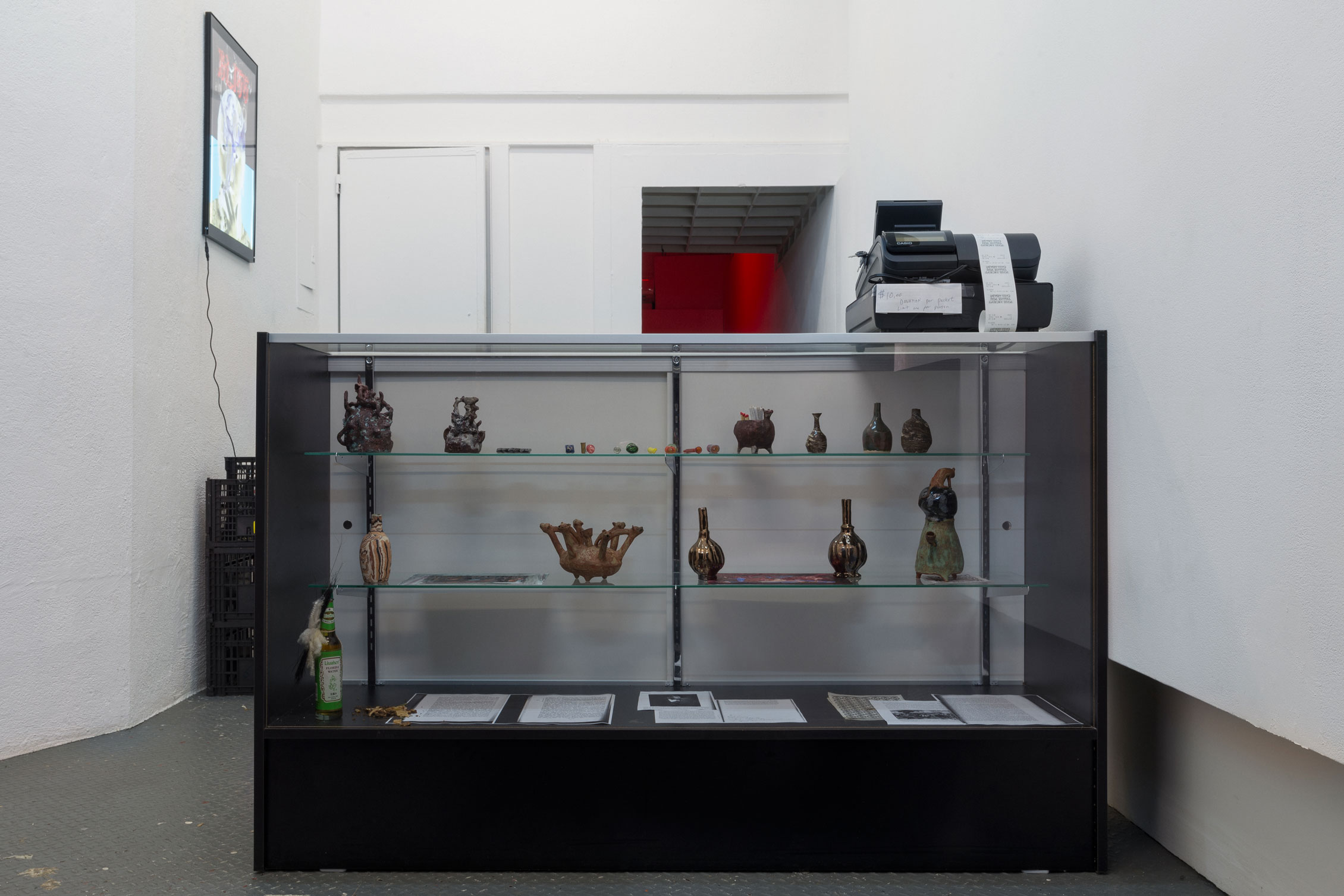
In the 19th and early 20th century, staged opium dens were set up in New York’s Chinatown for tourists to gawk at. More recently, in 2017, Omer Fast made a simulacrum of a crappy Chinese business, complete with broken cash machines and piles of trash, in James Cohan Gallery in the same neighborhood, leading to protests by local activists. Now Candice Lin, an Asian-American artist based in Los Angeles, has opened a sort of head shop in the Goethe-Institut’s Chinatown art space, Ludlow 38. “Spice,” curated by Franziska Sophie Wildförster, takes the form of a shop, but also of a participatory story. There’s a pegboard hung with hundreds of garishly designed packets of the drug “spice” (although these don’t really contain synthetic cannabinoids, just a special blend of smokeable herbs), which can be bought for $10, and on the back of which are printed fragments of a dark, magical and rather erotic sci-fi story written by the artist: a post-apocalyptic tale set in a future California ravaged by cyclones and drought, and inhabited by horny, constipated spice traders, told from the perspective of a disease, which may or may not be a drug addiction. Last Wednesday I took part in a reading in the space alongside three others; we were handed 10 packets from the pegboard each, and took turns reading from them in a random order. “I give you this spice,” writes Lin, “though it is only a temporary refuge, a round-trip-trip that inevitably returns you to the drooling sack of yourself. Until, one day, it doesn’t.”

There’s also a cash register, a display cabinet filled with glass pipes, handmade ceramic bongs and paintings of staged opium dens, and, in the homespun drug laboratory in the back, a bubbling glass retort filled with tobacco, sugar, poppies and hemp from which a mysterious clear elixir is being distilled. “There was,” says one character in the story, “a demon growing inside me, I believed. I would boil the liquid until it was dark brown and drink it regularly for a few days.” With “Spice,” Candice Lin spins a tale of trade, orientalist fantasy and addiction going back centuries; and in so doing brings to mind the widespread and ongoing protests about arts institutions taking money from the Sackler family (which owns the pharmaceutical company that produces OxyContin and as such has massively profited from the US opioid crisis), while also suggesting that in the 21st century, this new age of spice and lean and pharmaceutical opioids and downers and bath salts, America may well have been more ravaged by legal drugs than their prohibited counterparts.




